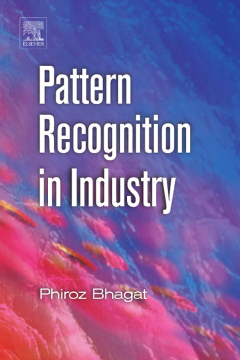
Additional Information
Book Details
Abstract
- "Find it hard to extract and utilise valuable knowledge from the ever-increasing data deluge?" If so, this book will help, as it explores pattern recognition technology and its concomitant role in extracting useful information to build technical and business models to gain competitive industrial advantage.
- *Based on first-hand experience in the practice of pattern recognition technology and its development and deployment for profitable application in Industry.
- Phiroz Bhagat is often referred to as the pioneer of neural net and pattern recognition technology, and is uniquely qualified to write this book. He brings more than two decades of experience in the "real-world" application of cutting-edge technology for competitive advantage in industry.
Two wave fronts are upon us today: we are being bombarded by an enormous amount of data, and we are confronted by continually increasing technical and business advances.
Ideally, the endless stream of data should be one of our major assets. However, this potential asset often tends to overwhelm rather than enrich. Competitive advantage depends on our ability to extract and utilize nuggets of valuable knowledge and insight from this data deluge. The challenges that need to be overcome include the under-utilization of available data due to competing priorities, and the separate and somewhat disparate existing data systems that have difficulty interacting with each other.
Conventional approaches to formulating models are becoming progressively more expensive in time and effort. To impart a competitive edge, engineering science in the 21st century needs to augment traditional modelling processes by auto-classifying and self-organizing data; developing models directly from operating experience, and then optimizing the results to provide effective strategies and operating decisions. This approach has wide applicability; in areas ranging from manufacturing processes, product performance and scientific research, to financial and business fields.
This monograph explores pattern recognition technology, and its concomitant role in extracting useful knowledge to build technical and business models directly from data, and in optimizing the results derived from these models within the context of delivering competitive industrial advantage. It is not intended to serve as a comprehensive reference source on the subject. Rather, it is based on first-hand experience in the practice of this technology: its development and deployment for profitable application in industry.
The technical topics covered in the monograph will focus on the triad of technological areas that constitute the contemporary workhorses of successful industrial application of pattern recognition. These are: systems for self-organising data; data-driven modelling; and genetic algorithms as robust optimizers.
"Phiroz Bhagat tackles the important problem of data inundation in this book, and offers innovative strategies using pattern recognition theory in practical applications. There are good ideas here, well worth exploring."
Peter Likins
President, University of Arizona
"Dr. Bhagat has put his finger on a problem of enormous practical significance and intellectual challenge. The recent technology-driven advances in the ability to generate data have outpaced the ability to understand their meaning. Systematic, quantitative methods aimed at transforming data into useable information are greatly needed. This text will help scientists and engineers understand data and information and assist in the conversion of the former into the latter."
Michael T. Klein,
Dean, School of Engineering, Rutgers, The State University of New Jersey
"The 21st century is characterized by ready access to large amounts of data on nearly any subject. Computers, modern instrumentation, the world wide web, search engines, massive data storage capabilities, and modern telecommunications networks make this possible. Modern sciences are now beginning to be deployed to mine these data and bring added value from them."
Dr. Bhagat, a professor with many years of industrial experience, has written a monograph explaining and illustrating how computer modeling using neural network theory can be applied to industrial problems of great complexity and importance. This excellent monograph contains an introduction to the theoretical foundations of how biological principles of learning can be applied to complex problems in industry. He illustrates the theory by providing a number of case studies. Examples, drawn from his industrial experience show how, for example, a superior design of a complex chemical process can be obtained. Another case illustrates how management may develop a better predictive model from corporate data to develop a more profitable business strategy.
Robert A. Gross
Percy K. and Vida L. W. Hudson Professor Emeritus and Dean Emeritus of the Faculty of Engineering and Applied Science, Columbia University
